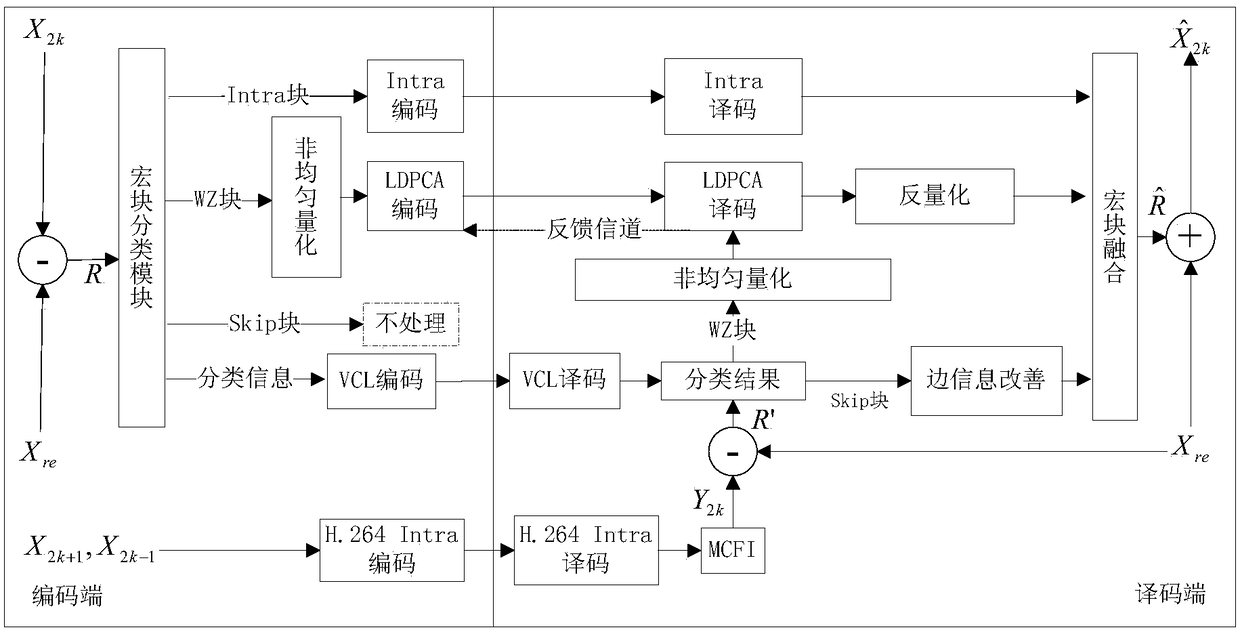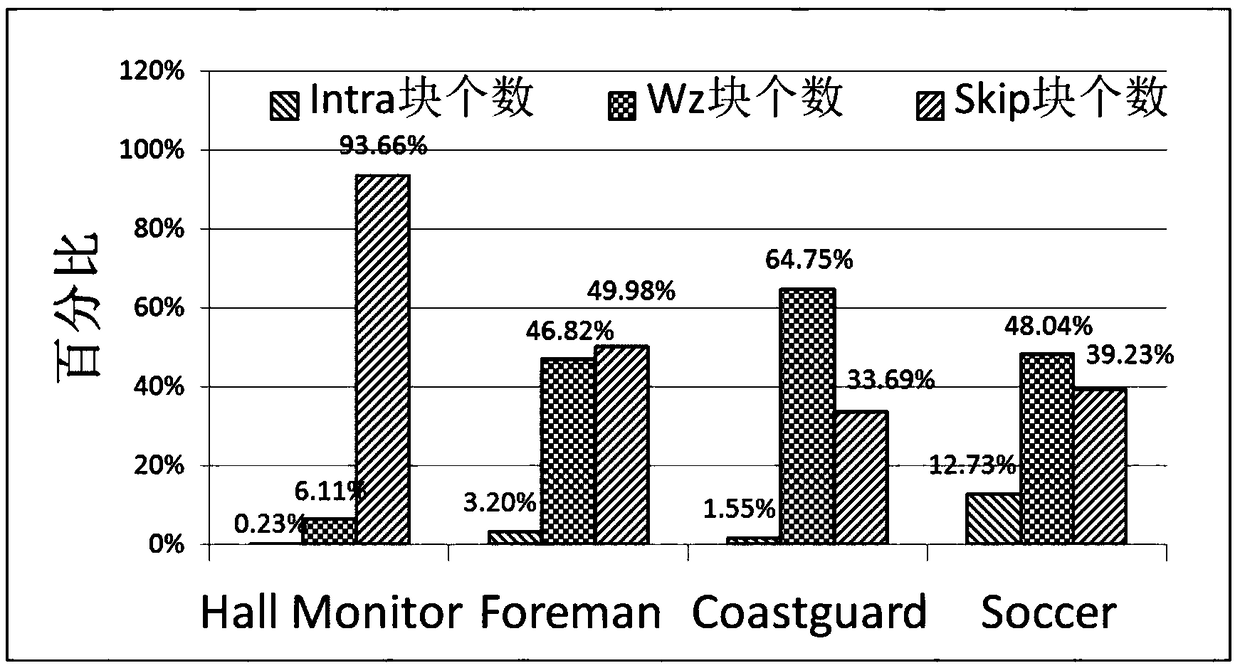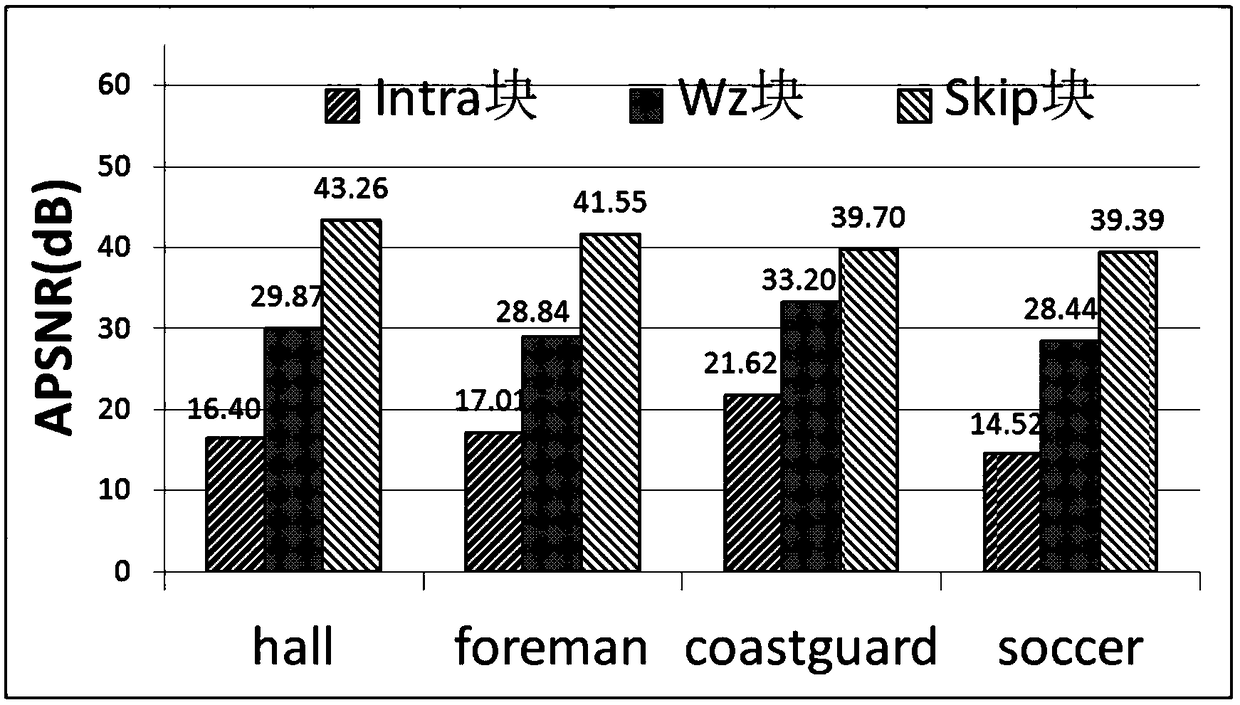A Distributed Residual Video Coding Method Based on Macroblock Classification
A distributed, encoding and decoding technology, applied in the field of video encoding and decoding, can solve the problems of increasing the complexity of the encoding end, and achieve the effect of maintaining low complexity, accurate classification of macroblocks, and simple threshold setting
- Summary
- Abstract
- Description
- Claims
- Application Information
AI Technical Summary
Problems solved by technology
Method used
Image
Examples
Embodiment 1
[0047] In a distributed video coding system, macroblock classification at the coding end is an effective method to improve the rate-distortion performance of the system. In the existing encoding end macroblock classification scheme, the classification algorithm usually needs to set the threshold value in advance, but there is no clear explanation on how to set the threshold value; at the same time, more complex calculations are required, which increases the computational burden on the encoding end; In order to classify macroblocks more accurately, the encoder needs to generate side information, which increases the complexity of the encoder; the above shortcomings limit the practicability of the classification scheme.
[0048] The distributed residual video coding method based on macroblock classification in this embodiment first gives some basic definitions:
[0049] A. The video sequence is divided into WZ frame and KEY frame according to the size of GOP=2, where X 2k for WZ...
Embodiment 2
[0086] This embodiment is a specific experimental plan, using four test videos of Hall Monitor, Foreman Coastguard, and Soccer in QCIF format and a frame rate of 15 frames per second. GOP is 2, odd frames are KEY frames, encoded by H.264 / AVC Intra, QP is set to 14, 16, 18, 20, 24, 27, 30, 32 respectively; even frames are WZ frames, LDPCA code length is 396 .
[0087] 1. Macroblock classification effect and Skip block side information improvement results
[0088] figure 2 The proportion of each macroblock after all R frames of four video sequences are classified according to BMD-DRVC is given. image 3 is true figure 2 The PSNR (R block ,R′ block ) and find their average value (APSNR), from image 3 It can be seen that the APSNR of the Intra block is mostly around 14dB ~ 17dB, which shows that the difference between the Intra block and the corresponding side information block is large, and it is more effective to use Intra coding for this kind of macroblock than Wyner-Z...
PUM
 Login to View More
Login to View More Abstract
Description
Claims
Application Information
 Login to View More
Login to View More - R&D
- Intellectual Property
- Life Sciences
- Materials
- Tech Scout
- Unparalleled Data Quality
- Higher Quality Content
- 60% Fewer Hallucinations
Browse by: Latest US Patents, China's latest patents, Technical Efficacy Thesaurus, Application Domain, Technology Topic, Popular Technical Reports.
© 2025 PatSnap. All rights reserved.Legal|Privacy policy|Modern Slavery Act Transparency Statement|Sitemap|About US| Contact US: help@patsnap.com



